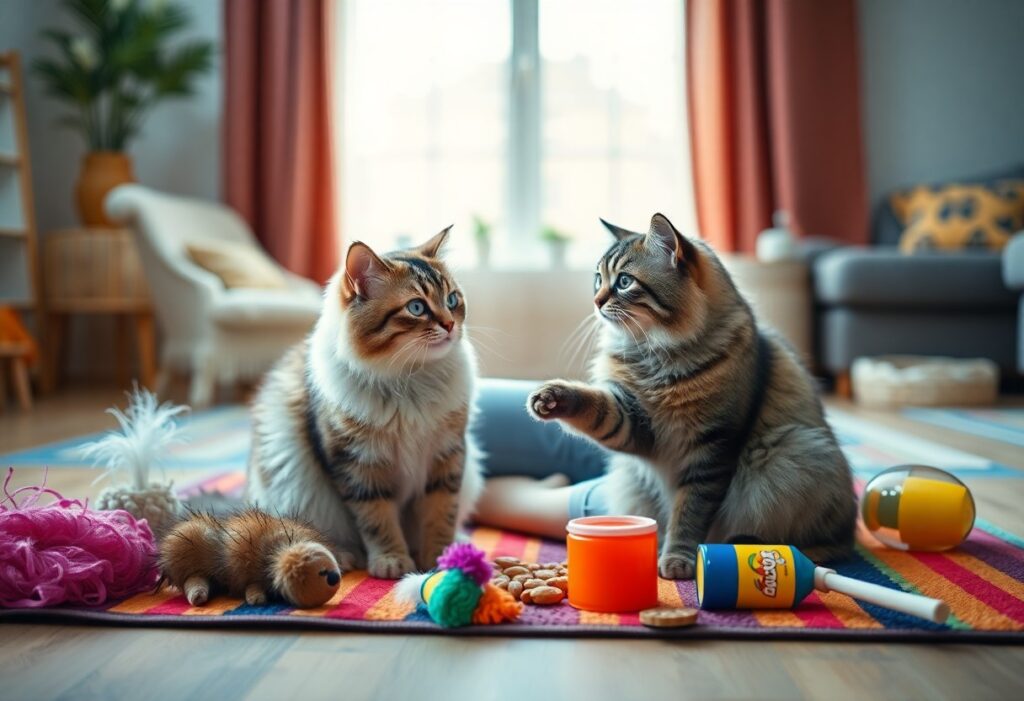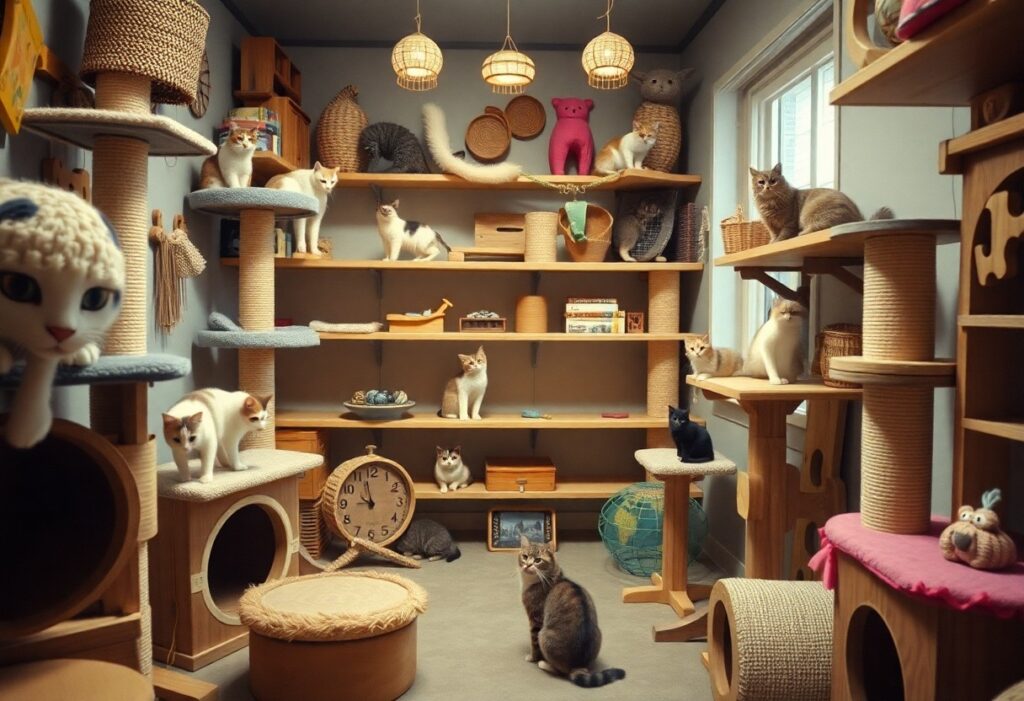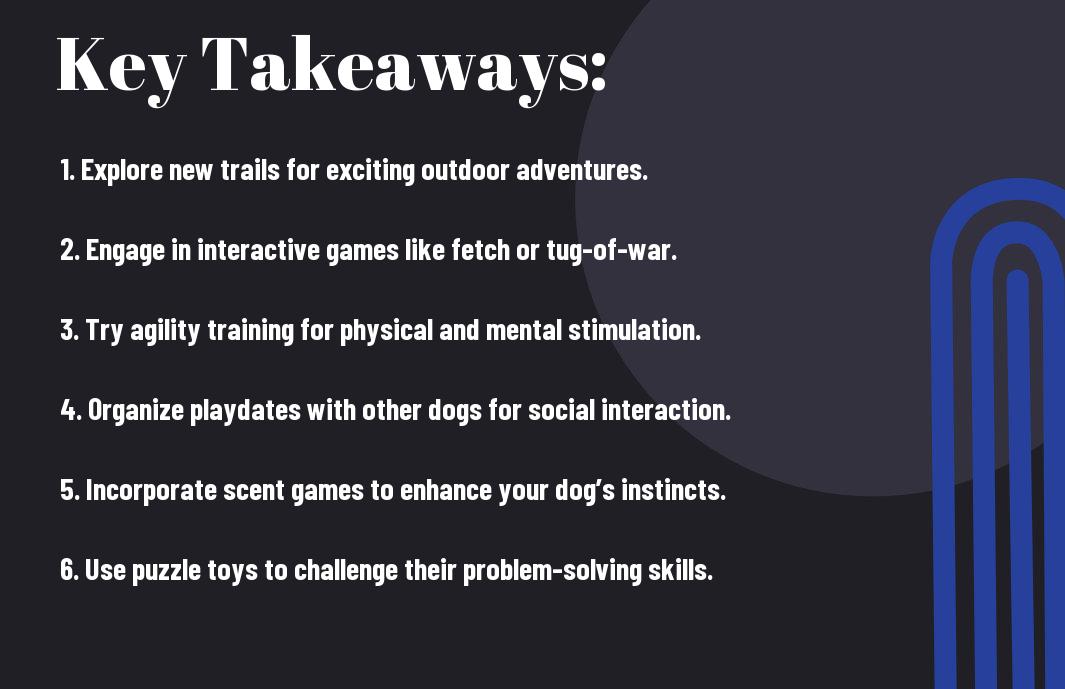Over time, you can transform playtime with your cat into a delightful learning experience that strengthens your bond. Not only will teaching your furry friend fun tricks enhance their mental stimulation, but it will also bring joy to both of you. By investing time into these interactive sessions, you help your cat become more engaged and improve their overall well-being. In this post, discover the top 10 tricks that will make playtime enjoyable and beneficial for both you and your beloved companion.
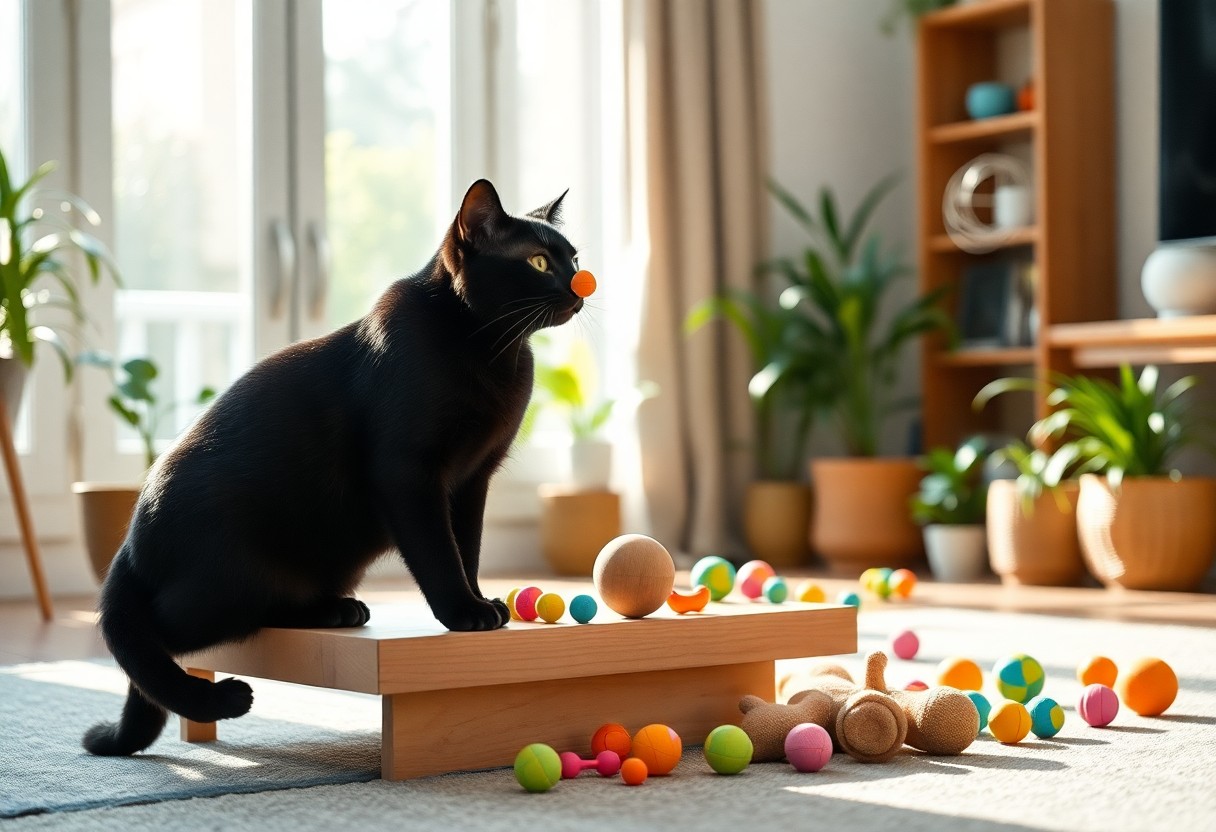
Key Takeaways:
- Engaging your cat in interactive playtime can strengthen your bond and enhance their overall well-being.
- Teaching your cat tricks through positive reinforcement makes learning enjoyable and stimulates their mental agility.
- Consistent practice and patience are key to successfully teaching your cat any new trick, ensuring a rewarding experience for both you and your pet.
The Psychological Benefits of Trick Training
Engaging in trick training with your cat not only provides entertainment but also brings numerous psychological benefits. By challenging your feline friend to learn new skills, you foster a sense of accomplishment and boost their self-esteem. This interactive playtime can lead to a more balanced emotional state for your cat, contributing to overall well-being.
Strengthening the Human-Feline Bond
When you teach your cat tricks, you create shared experiences that deepen your connection. The time spent together reinforces trust and understanding, allowing your cat to see you as a reliable partner. This strengthened bond not only enhances your relationship but also creates a happier environment for both of you.
Mental Stimulation and Its Importance for Cats
Mental stimulation is key to keeping your cat engaged and happy. Trick training offers the opportunity for your cat to use their natural problem-solving skills and instincts. By introducing new challenges, you can prevent boredom and behavioral issues that often arise from a lack of mental engagement.
Providing your cat with mental stimulation through trick training is necessary for their overall health. Cats are naturally curious and intelligent creatures, and engaging their minds helps to prevent anxiety and destructive behavior. Incorporating tricks into your routine keeps your cat active and encourages them to think critically. A well-stimulated cat is more likely to exhibit positive behavior, leading to a more harmonious household. Your efforts in fostering their cognitive abilities can enhance their quality of life and strengthen your bond.
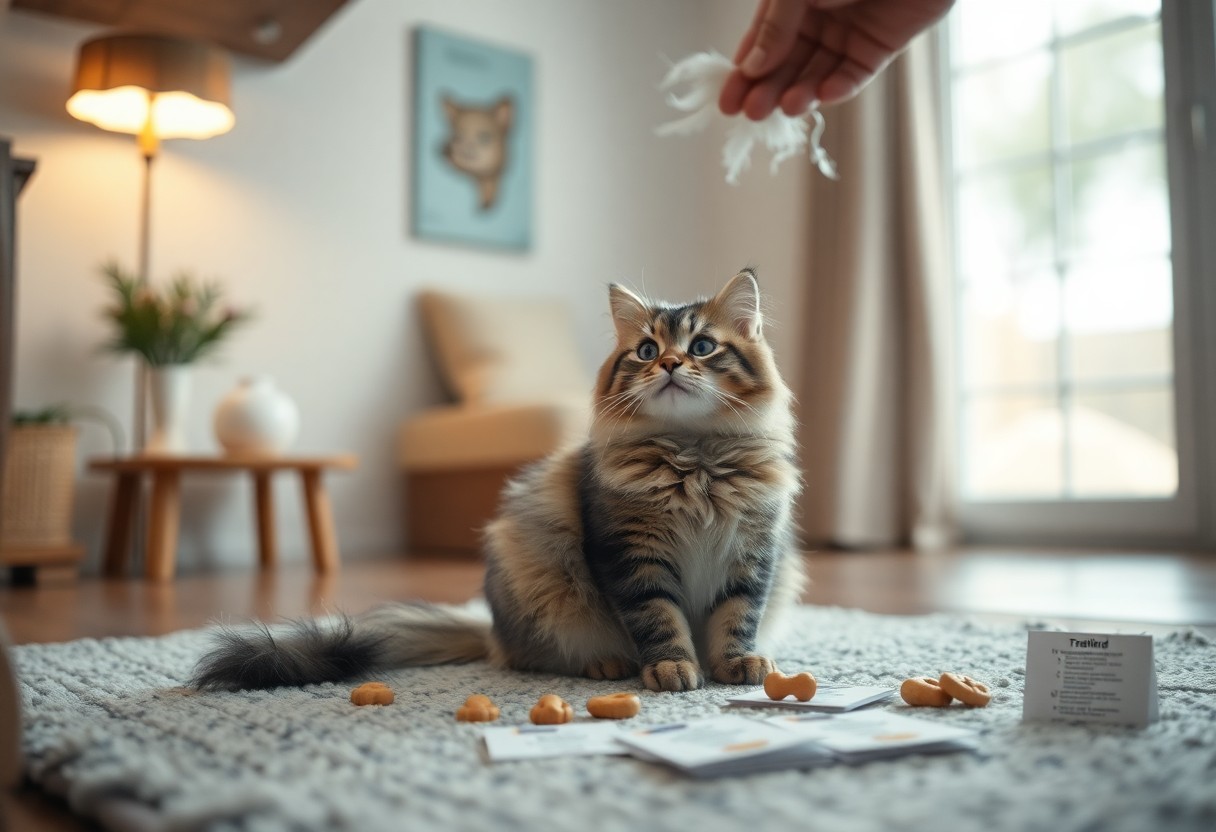
Preparing Your Cat for Interactive Learning
Getting your cat ready for interactive learning is an enjoyable journey that enhances your bond. Start by ensuring your cat is in a calm and relaxed state; this can make all the difference in their engagement. Establish a routine, as cats thrive on predictability. Short, frequent training sessions are ideal to keep your cat focused and willing. With patience and positivity, you’ll create a rewarding learning atmosphere that fosters trust and cooperation.
Creating the Right Environment for Training
Setting the stage for training is vital in helping your cat succeed. Choose a quiet, comfortable space free from distractions. Ensure the area is safe and familiar to your cat, as this will help them feel at ease. By having minimal noise and interruptions, your cat can concentrate on learning new tricks and responding to your cues more effectively.
Essential Tools and Treats to Use
Gathering the right tools and tasty treats is important for effective training. Positive reinforcement plays a significant role, so select treats that your cat loves, such as small pieces of chicken or special cat treats. Additionally, you may want to use clickers or verbal cues to clearly signal success. Having these tools at your disposal will motivate your cat and create a rewarding environment for learning.
When selecting treats, you want to choose ones that are not only tasty but also suitable for regular use, ensuring they are healthy yet enticing. Small, bite-sized treats are highly recommended, as they allow for frequent rewards without overfeeding your cat. A clicker can also be a fantastic training tool; it provides a clear and consistent signal that your cat has performed well. By having a combination of your cat’s favorite treats and training tools, you set the foundation for a successful and enjoyable interactive learning experience.
Step-by-Step Guide to Teaching Tricks
| Trick | Steps |
| “Sit” | Use a treat to guide your cat’s head upward until their bottom touches the ground. |
| “High Five” | Encourage your cat to raise their paw by offering a treat when they do. |
| “Roll Over” | Guide them onto their side using a treat, then help them complete the roll. |
The “Sit” Command: A Foundation for Learning
The “Sit” command is a fundamental trick that serves as a building block for all other commands. By teaching your cat to sit, you establish a basic level of obedience and create an effective communication channel. Begin training in a calm environment, using a tasty treat to guide your cat. Once they sit, offer immediate praise or reward. This simple trick lays the groundwork for more complex tricks.
Teaching “High Five” for Fun Engagement
Once your cat has mastered “Sit,” you can introduce the “High Five” command for an exciting interaction. Start by positioning your palm near their paw and enticing them with a treat. Gradually lift your hand, encouraging them to touch it with their paw. It’s a playful way to engage and bond with your pet, while also teaching them a fun trick.
To teach your cat a “High Five,” have some of your cat’s favorite treats ready. Ask your cat to “Sit,” then place a treat just above their paw. When they reach out, gently touch their paw with your hand while saying “High Five!” Immediately reward them with the treat to reinforce the behavior. Repeat this process, gradually increasing the height of your hand until your cat is fully engaging. Make sure to keep the sessions fun and positive, so your cat remains excited about the training!
Mastering the “Roll Over”: A Challenging Trick
Mastering the “Roll Over” trick takes patience and persistence, but the challenge can be rewarding. Once your cat is comfortable with “Sit,” position them lying down. Use a treat to encourage them to move onto their side, and gently guide them through the roll. Keep practicing, rewarding them for incremental progress until they can complete the trick fully.
Achieving the “Roll Over” command can be a delightful accomplishment for both you and your cat. Start with your cat in a “Down” position and show them a treat, gently moving it toward their shoulder to encourage the roll. If they seem hesitant, help them along with gentle nudges. It’s important to use positive reinforcement at every step—reward every effort, no matter how small. Training sessions should be short and enjoyable, so your cat remains engaged and enthusiastic throughout the learning process. With time and consistency, your cat will master this impressive trick!
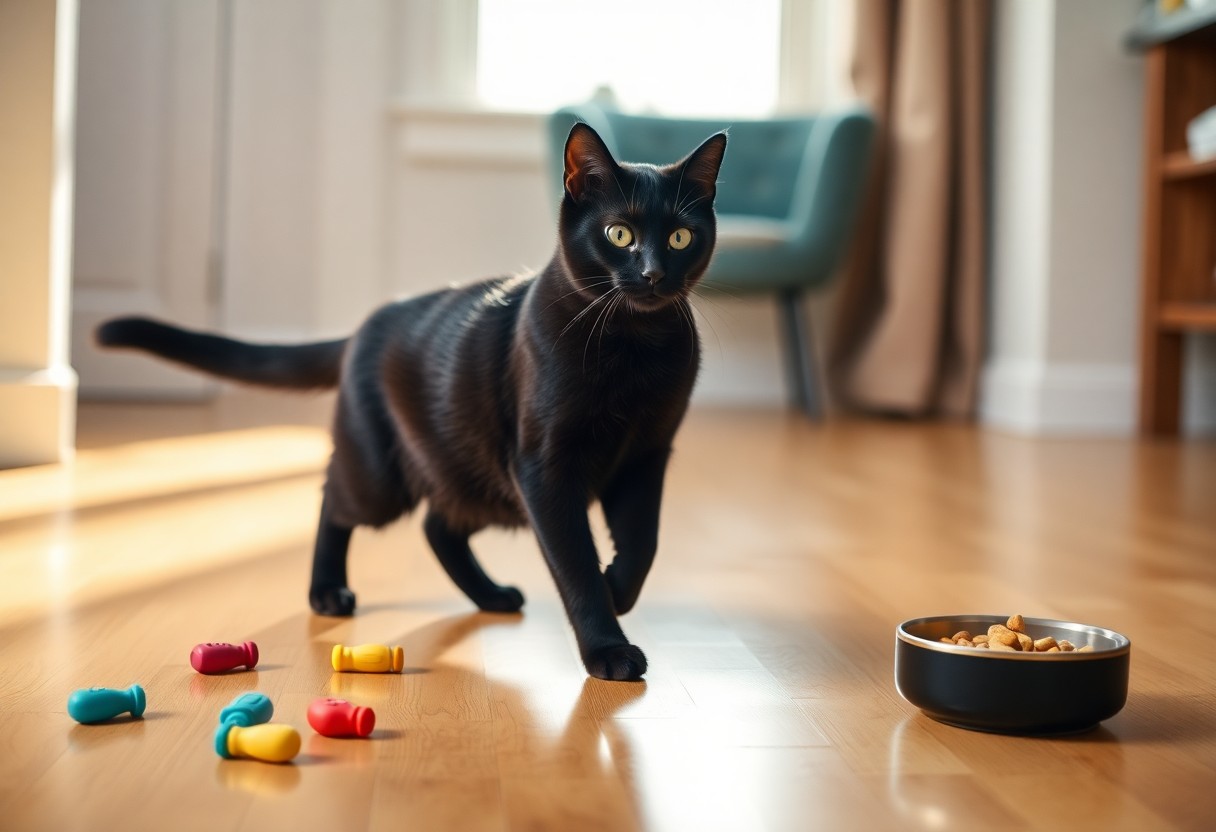
Troubleshooting Common Training Challenges
Training your cat can come with its own set of challenges, and understanding how to effectively navigate these obstacles can lead to a more rewarding experience for both you and your feline friend. By identifying common issues and employing tailored solutions, you can enhance your training sessions and foster a stronger bond with your cat.
Addressing Fear and Hesitation
If your cat displays signs of fear or hesitation during training, it’s important to take a step back and evaluate the situation. Creating a calm and safe environment can help your cat feel more comfortable. Introduce training gradually and allow your pet to explore the training aids at their own pace to build confidence.
Keeping Training Sessions Positive and Short
To keep your cat engaged, it is important to keep training sessions positive and brief. Aim for sessions lasting no more than 5-10 minutes to maintain your cat’s attention and enthusiasm. End each session on a positive note, offering treats, praise, or playtime to ensure that your cat associates training with enjoyable experiences.
By keeping training sessions short and positive, you can maximize your cat’s focus and prevent frustration. This approach encourages your feline companion to look forward to training rather than view it as a chore. After all, the goal is to create a fun learning environment that strengthens your bond and makes each session a delightful experience for both of you.
Integrating Playtime into Your Cat’s Daily Routine
Integrating playtime into your cat’s daily routine is important for their mental and physical well-being. Set aside specific times each day for interactive fun, making it a consistent part of your schedule. This not only keeps your cat engaged but also strengthens your bond. By varying the activities and introducing new tricks, you can keep playtime fresh and exciting. Aim for short sessions that cater to your cat’s energy levels, ensuring they remain engaged without becoming overwhelmed.
Balancing Training with Play for Enjoyment
Balancing training with play is key to keeping your cat motivated and enjoying the process. Incorporate training sessions within playtime, allowing your cat to learn while having fun. This method fosters a positive atmosphere, encouraging your pet to participate willingly. Always approach training with patience and celebration, rewarding their efforts with treats or affectionate praise to make learning an enjoyable experience.
Using Interactive Toys to Enhance Learning
Interactive toys can significantly enhance your cat’s learning experience by engaging their instincts and intellectual capabilities. These toys encourage your cat to think critically while developing coordination and agility. The variety of options, from puzzle feeders to battery-operated gadgets, keeps your cat mentally stimulated. Moreover, utilizing interactive toys during training sessions helps build a connection between the fun of play and the rewards of learning, promoting a proactive attitude toward mastering new tricks.
Final Words
Conclusively, engaging in interactive playtime with your cat not only strengthens your bond but also encourages mental and physical stimulation for your feline friend. By teaching your cat these 10 fun tricks, you create memorable experiences that promote trust and communication between you. These playful sessions enhance your relationship and ensure your cat stays active and engaged. Embrace the joy of learning together, and watch as your kitty blooms into a more confident and happy companion.
Q: What are the benefits of teaching my cat tricks?
A: Teaching your cat tricks can lead to numerous benefits beyond just entertainment. Firstly, it strengthens the bond between you and your feline friend, as positive interactions help to build trust and companionship. Additionally, engaging in trick training provides mental stimulation, keeping your cat’s mind sharp and reducing boredom-related behaviors. Lastly, training can also help to improve your cat’s overall behavior, as it encourages them to follow commands and respond to cues, promoting a more disciplined and happy pet.
Q: How can I effectively teach my cat these 10 tricks?
A: Effective cat training involves patience, consistency, and positive reinforcement. Start by breaking down each trick into smaller, manageable steps. Use tasty treats or toys as rewards to motivate your cat and reinforce successful attempts. Always train in a distraction-free environment, and keep sessions short—about 5 to 10 minutes— to keep your cat engaged. Use clear, specific cues (like verbal commands or hand signals) and remain positive; if your cat gets frustrated, take a break and return to the training later. Over time, your cat will learn to associate the cues with the desired behaviors.
Q: What if my cat doesn’t seem interested in learning tricks?
A: It’s not uncommon for some cats to show little interest in learning tricks initially. Factors such as age, personality, and mood can influence your cat’s willingness to engage. To spark their interest, choose the right time for training when your cat is alert and playful. Experiment with different types of rewards to find what they enjoy most—whether it’s treats, toys, or praise. Also, ensure that the training environment is comfortable and free from distractions. If your cat still seems disinterested, try incorporating elements of play or exploration into the training to make it more engaging for them.
